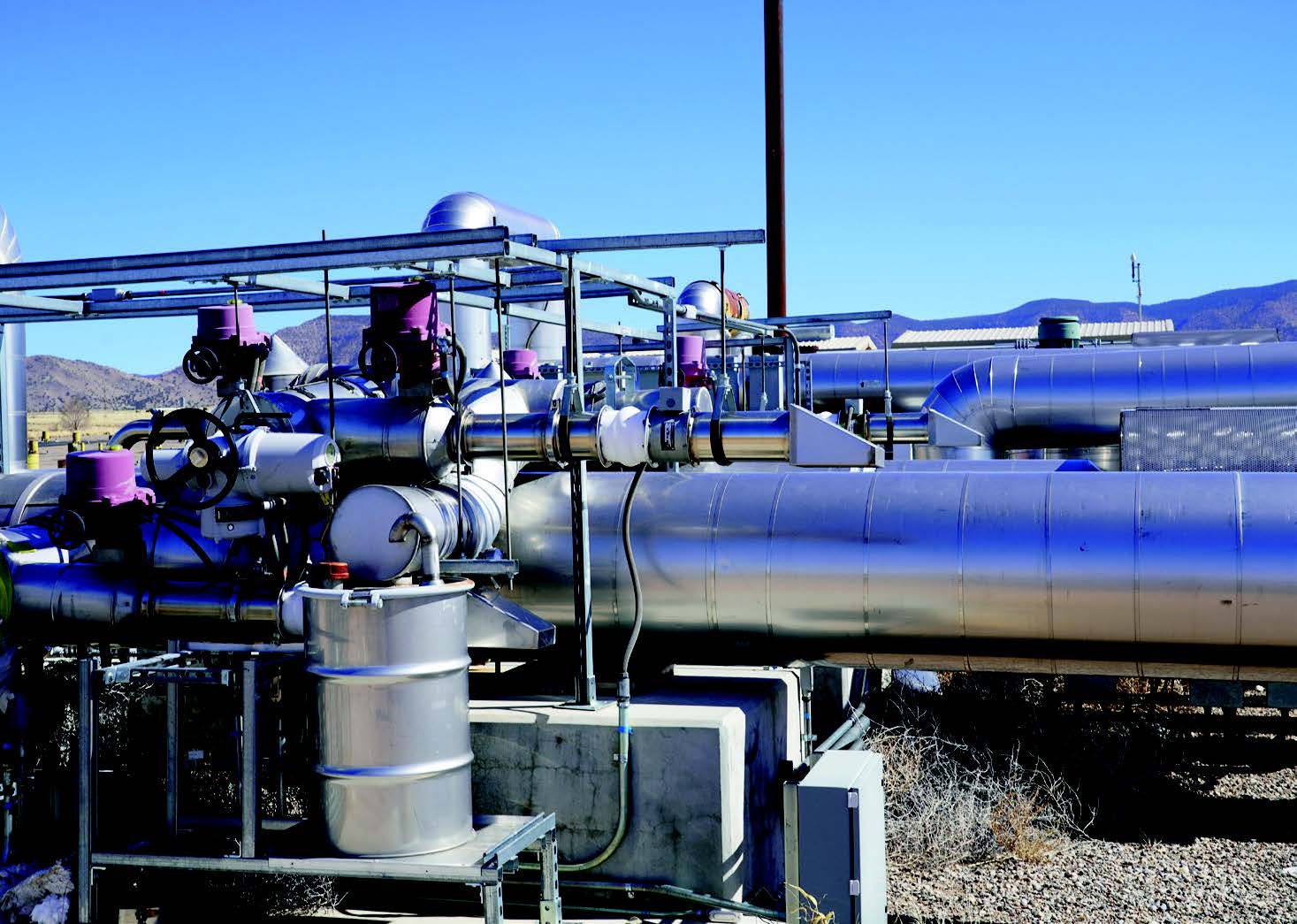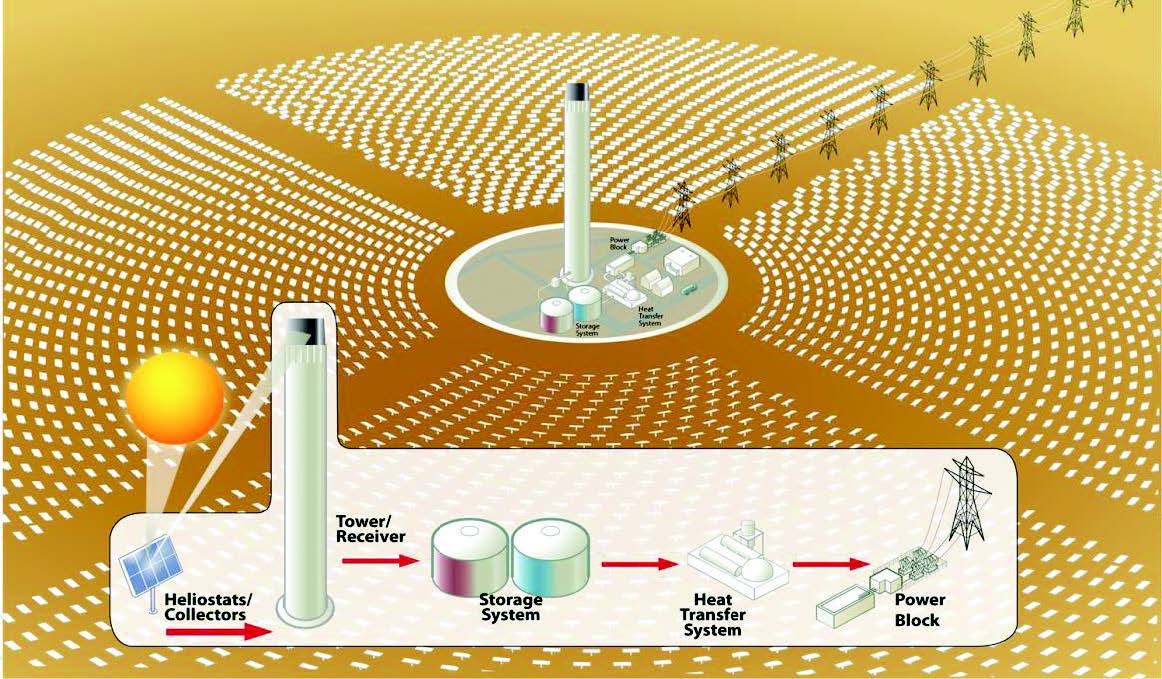Nuclear energy is expected to play a key part in providing for future energy needs. To help further develop this energy source, new safer technology like molten salt reactors (MSRs) have been much explored in recent years. MSR’s are a class of low-pressure liquid fuel nuclear fission reactor where the primary nuclear reactor coolant or fluid is a molten salt mixture.
Valve World Americas had the pleasure of speaking with Ken Armijo, Lead Researcher at Sandia National Laboratories, to learn about the company’s advanced molten salt valve, which can be employed in future reactors, its capabilities, and what this means for the future of energy testing and production.
By Sara Mathov
Ken Armijo, a lead researcher at Sandia National Laboratories, has always been passionate about engineering. He constantly leverages his education (Bachelor’s Degree in Mechanical Engineering, and PhD from the University of California, Berkley) to innovate existing industry technologies for a better, more sustainable future. In his current role as a Lead Researcher, he explained the various components and processes involved with a new technology, the use of molten salt. “I am a Systems Engineer at Sandia’s National Solar Thermal Test Facility, one of the many labs that is part of a greater impact effort,” said Armijo. “I lead our molten salt and alkaline metals experimental research, specifically as it pertains to industrial process equipment, transport systems, concentrating solar power, and nuclear energy technologies, as well as some fossil energy applications.”
A typical working day for Armijo includes fundamental research, along with modeling and simulation of thermal, hydraulic, and thermal mass transport systems, particularly for valves, pumps, and thermodynamic systems. “Understanding how valves, pumps, and different components can fit in small scale test loops (along with the research being done in a number of labs, both here in the U.S. and abroad) is the main bulk of what we do,” said Armijo. “We are also equipped to do experimental research with molten salt testing to push the limits of technology to higher temperatures.”
What is Molten Salt?
Molten salt is a material that is used as a cooling fluid within Nuclear Energy applications as well as in thermal energy storage. Its ability to absorb, transport and store thermal energy at high temperatures affords it many applications for reducing costs, while improving performance of power systems. The current research by Armijo and his team, investigates the employment of salts such as chlorides and fluorides to increase operational temperatures beyond 600°C to further promote even higher efficient power systems.
Testing and Applications
The Sandia National Solar Thermal Test Facility is where solar tower testing takes place. “This is mostly used for Concentrating Solar Power applications, as well as for aerospace, where we can validate and simulate high temperatures for power generation and high-flux re-entry conditions respectively,” said Armijo. This facility also includes an industrial-scale molten salt test loop, which is a unique facility that demonstrates thermal storage components at power-plant scales before building entire solar power plants,” said Armijo. “The main objective is to advance solar power-generation technology by being able to test multiple components in various conditions before investing large sums of money.”
“We also feature certain molten salt and valve test systems, so we can assess the quality of the components, as well as materials compatibility testing,” explained Armijo. “The molten salt test loop features three different loops and is globally very unique. You can actually test at the lower end of an industrial process scale, various pumps, valves, sensors and other components. This helps qualify different components.”
“We can also do materials compatibility assessment under flow. Our molten salt test pots can test materials either submerged in the salt, or in the vapor space, where we actually have found a lot of materials reliability concerns,” he said. “If you have any evolved impurities, such as hydrochloric acid or hydrofluoric acid, those things can deteriorate and impact the performance of a thermal hydraulic component such as a valve or pump. Over time, it can even cause safety concerns when it comes to gaskets and seals.”

Valve Specifics
Armijo described a number of different technologies within a system. “In a molten salt thermal energy storage system, you have a hot tank, a cold tank, a number of pumps, and you need a lot of valves. Whenever transporting heat, you typically have a high temperature-side and low temperature-side for all of your testing or operations. Some experimental systems can have anywhere from eight to 20 valves,” said Armijo. “These vary between flow control valves, check valves, isolation valves, and more. For large commercial scales, globe valves tend to be used, as they are very reliable. Butterfly valves are also utilized, as well as linear, and rotary valves. We also have ball valves and shutoff valves,” he said. “There is research being done in both the U.S. and abroad to look at new ways of using not just materials, but ways of engineering design for these systems to improve valve performance.”

“What really makes a difference between the type of valve, is the ability to facilitate flow control. Flow control valves allow us to modulate flow, and some allow for more than others. Flow and temperatures could also be more well regulated or attemperated, so another stream of salt could go through, maybe at lower temperatures,” he said. “We also use check valves to ensure that flow is going in one direction and cannot back up and go in the other direction. We use valves not just for molten salt and alkaline metals, but also for the ullage gas systems.”
One of the biggest areas of R&D, said Armijo, is ensuring bubble-tight requirements are met, while still researching common failure points. “If you need to regulate two-phase flow, such as treatment of gases within your system, different valve seals can be used. The addition of purge ports can also help ensure the liquid phase of the salt does not leak out. Two-phase flow is not necessarily bad for valves, but it could be bad for pumps because it can lead to vibration, which can lead to cavitation and wear. Thus, packing and seals are one of the biggest challenges for valves and pumps.”
“Additionally, valves typically have welded connections, because molten salts wick easily and wet surfaces like that of stainless steels. Traditional flange systems have challenges of salt leakage from standard flanges,” he said. “But if you need to take the valve out to fix it, you just unbolt it and take it out. If you have welded connections, you have to cut it, take your valve out, repair it, put it back in, and reweld. No weld is ever as good as the first, so that is why we try to stick to flanges, gaskets, and seals.”
There are several projects and much research being done to investigate various components for MSR technology, including valves. “I actually have an ongoing advanced valve project. Most salt valves are meant for nitrate salts, up to 600°C. In our research, we are pushing the material limits up to 750°C, with different types of halide salts,” said Armijo.
Some of the researched improvements to valve solutions include a quick-change packing canister. “Salt can leak through packing over time and thermal regulation is a big issue as well, especially when there are large temperature offsets between the valve stem and motor controls,” he said. “We just did a test with a small valve and the actuator failed because it was just too hot. Extended bonnets may be a potential solution. Part of the work we are doing with our collaborators and valve companies is to utilize novel thermal management systems that can be integrated in a valve or applied externally to help regulate temperatures.”
Energy Transition – Looking Ahead
“Sandia is at the forefront of renewable energy. Our U.S. National Labs are leading the charge with concentrating solar power,” said Armijo. “This is different than photovoltaics, where sunlight is incident on a solar panel and electrons come out. The way our concentrating solar power facility works, solar energy reflects off of mirrors onto a solar receiver. The receiver is the bank of tubes with heat-transfer fluid, such as molten salts, falling particles, or supercritical gases that absorb thermal energy, and then process that thermal energy to two storage tanks. These tanks can store heat for up to 16 hours of thermal energy storage, which could be discharged into a heat exchanger, and subsequent power block. Concentrating solar power has been touted as a really good technology for this kind of work,” said Armijo.
The company is also doing particle research, looking at fine particles that were originally used in fracking. “We found a new application for them because they can go to temperatures above 1,000°C. They fall through from a top hopper to a bottom hopper where the sun hits the middle test section and they can then be stored,” he said. “One benefit to this, is there is no freezing or significant issues, as there can be with molten salts or alkaline metals. They can also be easily transported with pumps. So, we are looking at several novel technologies, in addition to molten salts. We are really pushing the envelope because as you increase the temperature of thermodynamic processes, efficiencies get higher. If that is higher, overall performance can go up and you can get more electricity,” explained Armijo.
Going forward, several ways of producing energy will still be used, according to Armijo. “All of the technologies will have to work together. Wind is generally better at night, solar is better during the day. But what is really innovative is thermal energy storage technologies, which will make a significant difference as renewable energy sources become more popular. Right now, I think solar thermal is one of the best because we can store thermal energy for up 16 hours, which no other renewable technology can really do at this point. As different renewables figure out how to leverage energy storage and power production on demand, that will be the key difference,” he concluded.


